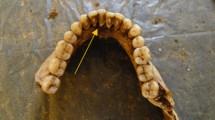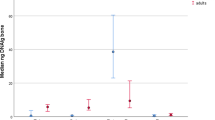Abstract
Molecular identification of extremely compromised human remains in forensic field is usually performed from DNA typing of bones, which are a difficult sample to work with. Moreover, autosomal STR profiles do not always result in the identification of the donor due to lack of comparisons or non-hit throughout database searching. An attempt to overcome these issues is represented by fingernails as an alternative DNA source and Y-STRs typing to infer both geographical and familial ancestry of the unknown donor. In this study, we analyzed both 24 autosomal and 27 Y-chromosome STRs from unidentified human remains (UHRs) of five males recovered from the water near the southwestern coast of Sardinia by the Italian Harbor Master’s Office. Nail clippings provided an optimal source of autologous DNA for molecular identification in a very short time, producing complete autosomal and Y-STR profiles even under conditions of high body degradation. Unfortunately, no match neither compatibility occurred using autosomal STRs (aSTRs), initially. Upon analyzing the Y-haplotypes, we found out they had already been observed in northern Africa, providing us important investigative leads. This prompted the International Criminal Police Organization (INTERPOL) to provide us with references of alleged relatives that were then confirmed to be related. The use of fingernails represents an excellent DNA source especially for genetic identification of decomposed bodies recovered in seawater environment. Notably, DNA extracted from nails gave high-quality Y-STR haplotypes by which predicting paternal ancestry of the unidentified donors may result fundamental in the forensic investigative context.

Similar content being viewed by others
Data availability
Datasets generated and/or analyzed during the current study are available from the corresponding author on reasonable request.
References
Finaughty C, Heathfield LJ, Kemp V, Márquez-Grant N (2023) Forensic DNA extraction methods for human hard tissue: a systematic literature review and meta-analysis of technologies and sample type. Forensic Sci Int Genet 63:102818. https://doi.org/10.1016/j.fsigen.2022.102818
Corrêa H, Cortellini V, Franceschetti L, Verzeletti A (2021) Large fragment demineralization: an alternative pretreatment for forensic DNA typing of bones. Int J Legal Med 135:1417–1424. https://doi.org/10.1007/s00414-021-02531-0
Schlenker A, Grimble K, Azim A et al (2016) Toenails as an alternative source material for the extraction of DNA from decomposed human remains. Forensic Sci Int 258:1–10. https://doi.org/10.1016/j.forsciint.2015.10.025
Inkret J, Podovšovnik E, Zupanc T, Pajnič IZ (2020) Nails as a primary sample type for molecular genetic identification of highly decomposed human remains. Int J Legal Med 134:1629–1638. https://doi.org/10.1007/s00414-020-02289-x
Allouche M, Hamdoum M, Mangin P, Castella V (2008) Genetic identification of decomposed cadavers using nails as DNA source. Forensic Sci Int Genet 3(1):46–49. https://doi.org/10.1016/j.fsigen.2008.07.008
Mameli A, Piras G, Delogu G (2014) The successful recovery of low copy number and degraded DNA from bones exposed to seawater suitable for generating a DNA STR profile. J Forensic Sci 59:470–473. https://doi.org/10.1111/1556-4029.12323
Sharma S, Pal M (2020) Fingernail DNA as a forensic tool in crime investigation. Seybold Report 15:1297–1311
De Donno A, Campobasso CP, Santoro V et al (2014) Bodies in sequestered and non-sequestered aquatic environments: a comparative taphonomic study using decompositional scoring system. Sci Justice 54:439–446. https://doi.org/10.1016/j.scijus.2014.10.003
Heaton V, Lagden A, Moffatt C, Simmons T (2010) Predicting the postmortem submersion interval for human remains recovered from U.K. waterways. J Forensic Sci 55:302–307. https://doi.org/10.1111/j.1556-4029.2009.01291.x
Ye J, Ji A, Parra EJ et al (2004) A simple and efficient method for extracting DNA from old and burned bone. J Forensic Sci 49:754–759
Prinz M, Carracedo A, Mayr WR et al (2007) DNA Commission of the International Society for Forensic Genetics (ISFG): Recommendations regarding the role of forensic genetics for disaster victim identification (DVI). Forensic Sci Int Genet 1:3–12. https://doi.org/10.1016/j.fsigen.2006.10.003
Gusmão L, Butler JM, Carracedo A et al (2006) DNA Commission of the International Society of Forensic Genetics (ISFG): an update of the recommendations on the use of Y-STRs in forensic analysis. Forensic Sci Int 157:187–197. https://doi.org/10.1016/j.forsciint.2005.04.002
Willuweit S, Roewer L (2007) Y chromosome haplotype reference database (YHRD): update. Forensic Sci Int Genet 1:83–87. https://doi.org/10.1016/j.fsigen.2007.01.017
Kling D, Tillmar AO, Egeland T (2014) Familias 3 – extensions and new functionality. Forensic Sci Int Genet 13:121–127. https://doi.org/10.1016/j.fsigen.2014.07.004
Berti A, Brisighelli F, Bosetti A et al (2011) Allele frequencies of the new European Standard Set (ESS) loci in the Italian population. Forensic Sci Int Genet 5:548–549. https://doi.org/10.1016/j.fsigen.2010.01.006
Hill CR, Duewer DL, Kline MC et al (2013) U.S. population data for 29 autosomal STR loci. Forensic Sci Int Genet 7:e82–e83. https://doi.org/10.1016/j.fsigen.2012.12.004
EZ1&2 DNA Investigator Kit handbook (Qiagen, 2022) Kit handbook available at the following link on qiagen.com for automated purification of DNA from forensic and human ID samples using EZ1 and EZ2 Connect Fx instruments. https://www.qiagen.com/us/products/human-id-and-forensics/investigator-solutions/ez1-2-dna-investigator-kit?catno=952034
Biondo R, De Stefano F (2011) Establishment of Italian national DNA database and the central laboratory: some aspects. Forensic Sci Int: Genet Supplement Series 3(1):e236–e237. https://doi.org/10.1016/j.fsigss.2011.08.117
Kruijver M, Taylor D, Buckleton J (2022) An experimental extension to the discrete Laplace method for Y-STR haplotype frequency estimation. Forensic Science International: Genetics Supplement Series 8:237–238. https://doi.org/10.1016/j.fsigss.2022.10.047
Wen Y, Liu J, Su Y et al (2023) Forensic biogeographical ancestry inference: recent insights and current trends. Genes Genom. https://doi.org/10.1007/s13258-023-01387-5
Author information
Authors and Affiliations
Contributions
All authors read and approved the final manuscript.
Corresponding author
Ethics declarations
Competing interests
The authors declare no competing interests.
Ethics approval
As samples were collected during judicial autopsies, informed consent was obtained through local Prosecutor Office.
Additional information
Publisher's Note
Springer Nature remains neutral with regard to jurisdictional claims in published maps and institutional affiliations.
Supplementary Information
Below is the link to the electronic supplementary material.
Rights and permissions
Springer Nature or its licensor (e.g. a society or other partner) holds exclusive rights to this article under a publishing agreement with the author(s) or other rightsholder(s); author self-archiving of the accepted manuscript version of this article is solely governed by the terms of such publishing agreement and applicable law.
About this article
Cite this article
Della Rocca, C., Chighine, A., Piras, G. et al. Nails as optimal source of DNA for molecular identification of 5 decomposed bodies recovered from seawater: from Y-ancestry to personal identification. Int J Legal Med 138, 787–792 (2024). https://doi.org/10.1007/s00414-024-03170-x
Received:
Accepted:
Published:
Issue Date:
DOI: https://doi.org/10.1007/s00414-024-03170-x




